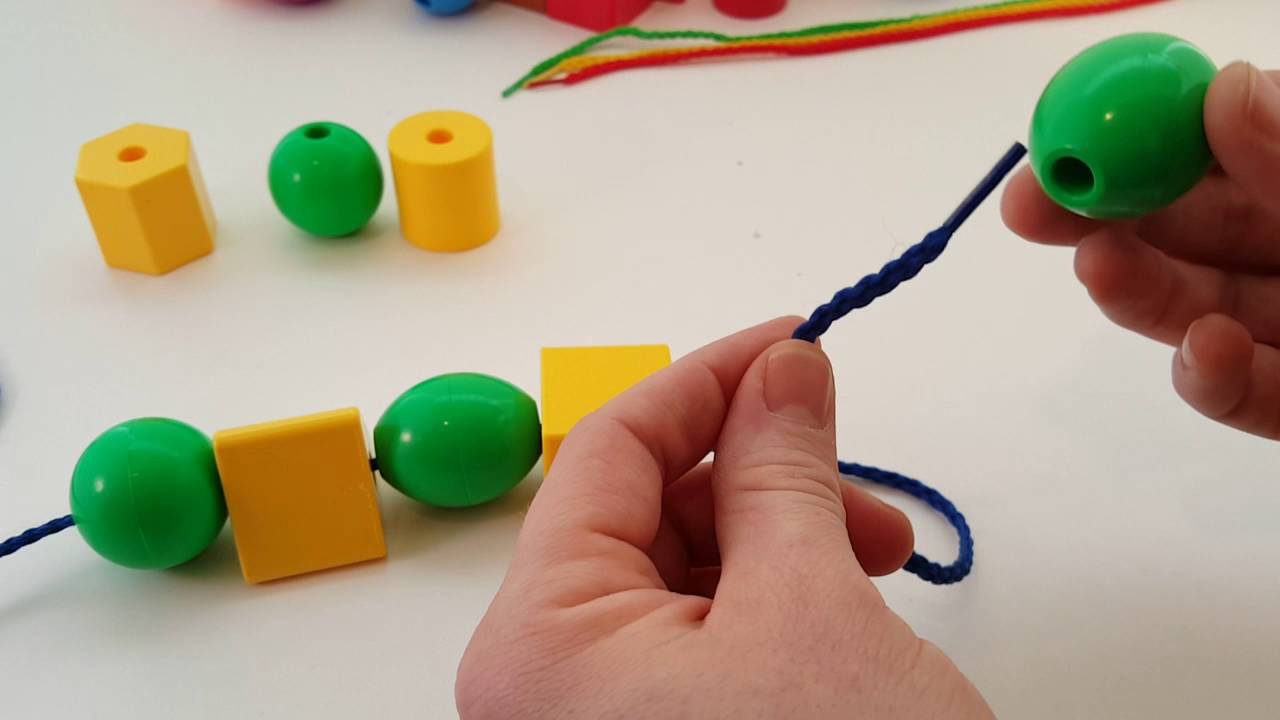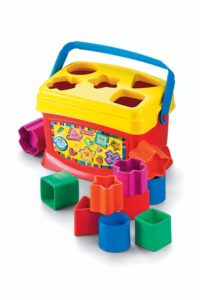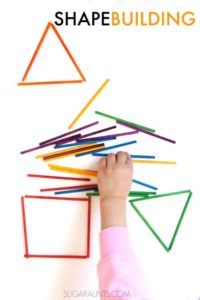Ask The Therapist – What is Visual Motor Integration?
by Amanda Mazerall, OTR/L
Kids Place Central Pediatric Occupational Therapist
Visual Motor Integration, or ‘VMI,’ is a form of coordination that allows us to accurately control our hand movements based off of vision. Poor VMI skills may impact a child’s ability to write their name, catch a ball, or complete a puzzle. As an Occupational Therapist, I try to incorporate VMI activities into all of my sessions, whether I am working with a 2 year old or a 9 year old.
Below are some general milestones your child should be meeting and some activities to improve their hand-eye coordination skills.
2 years of age:
At 2, your toddler should be able to string beads, look through pages of a book, complete 3 piece form puzzles, stack blocks, and draw a vertical line. Encourage your child to complete such tasks by showing excitement for those activities and offer assistance as needed. Additional activities that you can complete at home include:
 Simple shape and color sorting toys. Talk about the object’s size, color, and shape to help them better understand the differences and ways to organize them.
Simple shape and color sorting toys. Talk about the object’s size, color, and shape to help them better understand the differences and ways to organize them.- Drawing vertical lines and coloring in pictures.
- Play with toys that require 2 hands for assembly.
- Placing beads onto a sturdy pipe cleaner or straw for increased ease. Once they understand how to do that, work on stringing beads!
3 years of age:
Within the third year, your child should be able to catch an 8” ball, draw a circle and cross, cut across paper, manipulate buttons set in front of them, and hold a pencil with efficient use of their fingers. In order for your child to meet such milestones, you can encourage them to complete the following:
- Practice pre-writing activities (copy lines/shapes, tracing, mazes, coloring, etc.) on a vertical surface to promote proper wrist extension and use of fingers versus a whole hand grasp.
- Improve bilateral coordination through play that requires use of two hands.
- Have your child cut across paper with spring loaded scissors or make necklaces out of snap beads.
- Play with hand manipulatives to improve arch development and hand strengthening (tongs, tweezers, spray bottle, play dough, small broken crayons, etc.).
- Practice popping moving bubbles or catching a slow moving balloon prior to catching a ball.
- Encourage participation in self-care tasks with dressing and grooming.
- Work on jig-saw puzzles. Puzzles that have 12 pieces should work well!
4-5 years of age:
Between 4 and 5, your child should be able to draw a square, cut out a circle, copy block designs, and write their name. To get them prepared for these tasks and other school work, encourage completion of the following:
 Practice pre-writing shapes by forming them out of tangible items like Popsicle sticks or tooth-pics. You may also complete shape and letter formation in more fun ways like with Play-Doh or using fingers to draw them in shaving cream & sand. You could also use a clear sheet protector to have you child trace and copy the shapes you have formed with a washable marker.
Practice pre-writing shapes by forming them out of tangible items like Popsicle sticks or tooth-pics. You may also complete shape and letter formation in more fun ways like with Play-Doh or using fingers to draw them in shaving cream & sand. You could also use a clear sheet protector to have you child trace and copy the shapes you have formed with a washable marker.- Have story time before bed and encourage your child to read along. Doing so will work on ocular motor control, letter identification, and overall fluency. Deficits with reading and visual motor skills often go hand in hand.
- Have your child help with chores! Having them use two hands to fold laundry and wash dishes may not make for a perfectly tidy house but it will help their skills develop!
- Have them complete jig-saw puzzles that have 12-25 pieces. This will help develop visual closure skills and fine motor control.
Lastly, please remember to limit screen time on tablets and phones! It may seem like the games your child is playing will help promote visual motor skills, but it is quite the opposite. A 2D game about stacking blocks will not translate to 3D play with blocks. Have your child spend as much time outside playing in the park, hiking, swimming, and participating in sports. Physical activity is a great pre-cursor to seated visual motor activities!









